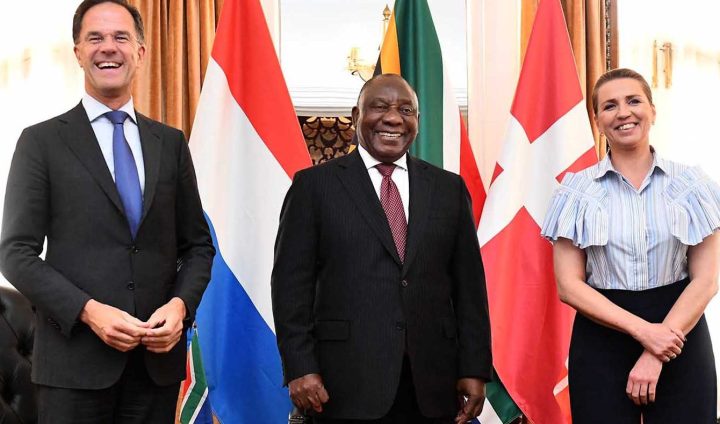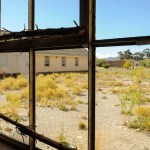JOINT FINANCING PARTNERSHIP
SA launches $1bn green hydrogen fund with Netherlands, Denmark to tackle climate crisis

The SA-H2 fund is seeded by an initial €50m from Invest International, and aims to capitalise on South Africa’s wind and solar resources to mitigate the impacts of the climate crisis.
A new fund to promote the financing of green hydrogen initiatives in South Africa was announced in Pretoria on Tuesday as part of a joint effort between the Netherlands, Denmark and South Africa.
The fund aims to capitalise on South Africa’s abundance of wind and solar resources, and its significant industrial capacity. With green hydrogen earmarked to replace natural gas, it plays a key role in plans to transition away from coal towards more sustainable sources of energy.
The $1-billion fund, dubbed SA-H2, was seeded by an initial €50-million from Invest International of the Netherlands, with the remainder of the money to be raised over the next two years.
Supported by multiple institutions, including the Development Bank of Southern Africa, Industrial Development Corporation and Sanlam, it will be managed by The Hague-based Climate Fund Managers.
Read more in Daily Maverick: Green hydrogen provides answer to many of South Africa’s decarbonisation prayers, studies show
The announcement was attended by President Cyril Ramaphosa, Danish Prime Minister Mette Frederiksen and Dutch Prime Minister Mark Rutte, all of whom made commitments to knowledge sharing and highlighted the importance of mitigating the impacts of climate change as part of a just transition, a commitment which has been softened in South Africa by the load shedding crisis.
“Our country faces severe electricity challenges,” said Ramaphosa. “The development of new renewable energy generation capacity alongside our own existing fleet of power stations that are coal-fuelled and generated is vital for our long-term energy security.”
Waterworks in St Petersburg
Other remarks by the President elicited a less than favourable response. Noting his recent trip to Ukraine and Russia as part of an African-led attempt at a peace deal, Ramaphosa spoke of seeing waterworks in the Russian city of St Petersburg.
“The minister told me the Dutch had been involved in the making of those wells and those fountains in that historic place,” said Ramaphosa, “…and so we want that capability and that capacity to be brought here.”
Rutte shifted in his seat and a visibly irritated Frederiksen looked on.
However, the remainder of the event was a public display of partnership between all parties who stand to benefit strongly from early investment in green hydrogen technologies, which are likely to play an increasingly significant role in the global pursuit of emission reduction and are predicted to become a growing and lucrative industry.
Nine green hydrogen projects in South Africa have been granted Strategic Integrated Project status, with many likely to receive approval for SA-H2 funding in an attempt to fast-track the growth of the country’s green hydrogen industry, which aims to attract as much as $250-billion by 2050, according to South Africa’s presentations at COP27.
Read more in Daily Maverick: Green hydrogen – how South Africa can capitalise on it, and why we need to do it fast
South Africa already has significant applications for green hydrogen projects directly, with many companies such as Sasol and other industrial players making use of it in processes.
The President was also at pains to point out that in attendance and collaborating in the implementation of the fund were not just state-based entities and the private sector, but roleplayers from organised labour and NGOs.
The Netherlands and Denmark are not currently part of the Just Energy Transition Partnership, but are supportive of its objectives, of which green hydrogen plays a part. The two countries are, however, in discussions to join the alliance, which includes South Africa, the UK, US and European Union.
While the main focus of the day was the SA-H2 fund, a memorandum of understanding on green hydrogen was also signed between South Africa and the Netherlands, while amendments were made to an existing partnership between Denmark and South Africa on low-carbon energy technologies. Invest International also announced a finance package to assist in water-related public infrastructure.
The commitments represent an increasing commitment to combatting climate change as well as a strong belief by the three countries in the significance of green hydrogen as a critical factor in the sustainable energy mix of the future. DM
This article was edited on 21 June at 4.32pm to correct a figure.
To read all about Daily Maverick’s recent The Gathering: Earth Edition, click here.




















The structure of the fund is not clear. Is this just a loan or are the Dutch and Norwegians donating funds. We do not need additional debt to give the EU brownie points at our expence.
Not “brownie points”. Survival!
Parts of the Netherlands are below sea level, and the rest (as well as Denmark) is near sea level, and threatened by accelerating climate change & sea level rise!
You confuse Denmark with Norway! Both are powered around 80% by renewable electricity — mainly wind & hydro power, which is also transmitted to Denmark via underseas DC power line(s).
Yay! More money ! It’ll evaporate faster than hydrogen …
It is truly frustrating to see the continued hype about hydrogen, green or otherwise, and the money poured into it. While continuing to neglect the real solutions to our very real problems in immediately restoring the supply of electricity to the country. It takes far more energy to make the hydrogen than the benefit eventually derived from it, whereas in direct electrification there’s far greater immediate benefit. I am unable to post an illustrative graphic here – just google it yourself.
Get real! Power lines to transfer much electricity from the sunniest parts to where it is most needed do not exist. And efforts to build renewable power nearer are stubbornly blocked by the chair of the anc. As Andre de Ruyter so clearly pointed out, those are the obstructors of serious efforts to end load shedding!
Certainly NOT efforts to build huge solar & wind farms — by far the most affordable power today — in the Northern Cape around Boegoebaai. Even when those are used for currently less efficient technologies like green hydrogen, for which there already is a huge demand in Europe.
I don’t know what you’re trying to say Bernhard. You seem to ignore what I said and get off on an entirely different tangent.
As long as the Dutch and Danes hold the purse strings, and keep a very tight reign on contracts, payments and getting the work done, this could have great results.
If they plan to simply give the money to the government to finance the said projects, they might as well just flush it down the drain right now. Xxx
Agreed. It IS nice to see SA making formal alliances with more savoury partners at last too!
Indeed! So it is most important that “it will be managed by The Hague-based Climate Fund Managers”!
Brown and blue hydrogen are fairly widely made today in other parts of the world using fossil fuels. Green hydrogen is made using vast amounts of water and electricity. However, the electricity used in the process has to be “green”, i.e. made from non fossil fuels (wind, solar , hydro, nuclear). SA can’t currently get these sources of electricity into our grid because of political meddling and corruption. Makes you think!
Exactly! How on earth (actually just in SA) do the authors of the green hydrogen dream imagine there will be enough extra renewable energy to power the electrolysis process? We need very short-term storage to augment the baseload generation capacity. The conversion chain of renewable (solar, wind) to electricity to hydrogen gas to stored hydrogen to electricity required by the vast bulk of energy consumers, just does not make economic sense.
Announcements like these just re-affirm my scepticism of anything that comes out of a politician’s mouth, regardless of his or her domicilium.
You seriously overestimate the land area and cost needed for utility-scale solar. The cost of this land is actually tiny compared to that occupied by coal power and its mining plus waste disposal. Even the AREA needed for solar PV is less than for coal — see the authoritative Photovoltaics Today & Tomorrow by HM Hubbard in Science, 244, 297-304
And remeber that the Dutch & Danes will fund AND MANAGE this project, which “will be managed by The Hague-based Climate Fund Managers”!
The single biggest farm in the old SA was in the sunny and arid Gordonia district, where land is rather inexpensive. If covered in solar PV, it would generate more electricity (GWh per annum) than Eskom ever did. Even the USA (which measures nearly 3000 miles from coast to coast) does not consume as much electricity per annum as a 100 mile x 100 mile square of solar PV would generate.
Not so! If you consider the overall reaction 2H2O –> 2H2 + O2 and know atomic masses, it is rather clear that to make 1 ton of hydrogen from electrolysis, only 9 tons of water is needed, which may be drawn from the sea near Boegoebaai, where a huge green hydrogen plant is planned. Moreover, you also get 8 tons of pure oxygen, for which the word’s biggest plant (built by Linde, and extracting it from air via energy-intensive cryogenic distillation) is at Sasol Secunda.
Indeed, Sasol currently has the world’s largest hydrogen and oxygen plants. It is also the world’s largest consumer of both in its petrochemicals synthesis plants. Its plant at Secunda is also the world’s biggest point source of CO2, which makes it vulnerable to future boycotts.
That is why Sasol enthusiastically supports green hydrogen along our sunny and windy West Coast, from where there is at present insufficient power lines to transport much power to our industrial heartland.
And remember that this project “will be managed by The Hague-based Climate Fund Managers”!